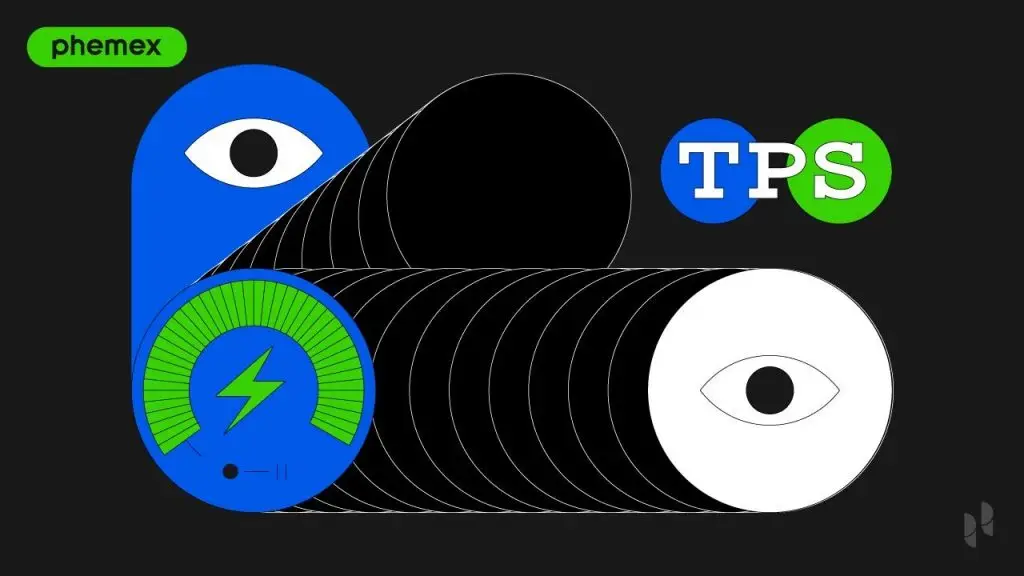Back
TPS (Transactions Per Second)
Telos
By HackQuest
Jul 30,20244 min readWelcome to the Web3 world, where digital finance and applications are shown in a revolutionary way through the fusion of blockchain technology, cryptocurrencies, and a pioneering spirit. Are you overwhelmed by the wealth of terms in the Web3 world that you don’t understand? Are those slang barriers for you to learn about Web3? Don’t worry! We’re here to explain the obscure terms to guide your learning. Today, we're diving into an essential concept in the world of Web3: [Transactions Per Second (TPS)].
Definition and Overview
Transactions Per Second (TPS) is a crucial metric for blockchain networks, indicating the number of transactions a blockchain can process in one second. TPS is essential for evaluating the performance, scalability, and efficiency of a blockchain, as it directly impacts the network’s ability to handle a large volume of transactions simultaneously.

Source: CoinSpot
Technical Composition
The TPS metric is influenced by several technical components and factors within a blockchain network:
●Consensus Mechanism: The type of consensus algorithm used (e.g., Proof of Work, Proof of Stake) plays a significant role in determining the TPS. For instance, newer mechanisms like Proof of Stake tend to offer higher TPS compared to traditional Proof of Work systems.
●Block Size and Time: Larger blocks can carry more transactions, and shorter block times can increase TPS. However, both must be balanced to maintain decentralization and security.
●Network Infrastructure: The underlying technology and optimization of the network's infrastructure are crucial for achieving high TPS. Improvements in these areas can significantly enhance transaction processing capabilities.
Core Functions
1.Transaction Processing: TPS measures the efficiency of transaction processing within a blockchain, ensuring that a higher number of transactions can be confirmed in a shorter period.
2.Scalability: High TPS is vital for scaling blockchain networks to support mass adoption, prevent network congestion, and ensure smooth operations.
3.User Experience: A higher TPS ensures faster transaction confirmations, enhancing the user experience for decentralized applications (dApps) and other blockchain-based services.
3 Most Common Types of TPS
1.Real-time TPS: The number of transactions processed per second in a live environment during normal operations.
2.Max Recorded TPS: The highest number of transactions processed per second that has been recorded on the network under optimal conditions.
3.Max Theoretical TPS: The maximum number of transactions that could theoretically be processed per second if all conditions were ideal and no real-world constraints applied.
Use Cases
Description: High TPS is critical for DeFi applications, which require the ability to handle numerous transactions simultaneously.
Examples: DeFi protocols like Uniswap and Aave benefit from high TPS, enabling them to process trades, loans, and other financial transactions efficiently.
Advantages: Improves liquidity, reduces transaction costs, and enhances the overall scalability of DeFi platforms.

Source: Phemex
Gaming and NFTs
Description: Blockchain-based games and NFT platforms require high TPS to ensure seamless user experiences and quick transaction processing.
Examples: Games like Axie Infinity and platforms like OpenSea leverage high TPS to handle in-game transactions and NFT trades without delays.
Advantages: Provides a smooth and responsive user experience, supporting the growing demand for digital assets and gaming on blockchain.
Enterprise Solutions
Description: Enterprises utilize high TPS for applications such as supply chain management and data integrity solutions, which require efficient transaction processing.
Examples: Companies can use blockchain to track goods and verify data integrity in real-time, benefiting from high TPS to ensure transparency and efficiency.
Advantages: Enhances operational efficiency, improves data security, and reduces costs associated with traditional transaction processing.
On Telos
Telos EVM (tEVM) provides an excellent illustration of high TPS in action. Telos boasts a transaction throughput of 15,200 transactions per second (TPS), making it one of the fastest blockchain networks. This high performance supports various applications, from DeFi to enterprise solutions, ensuring quick transaction processing and low fees. The efficiency and scalability of Telos demonstrate the importance of high TPS for supporting complex and high-demand blockchain applications.

Source: Telos Blockchain
Importance in Web3 Ecosystem
TPS is vital to the Web3 ecosystem, providing a measure of a blockchain's ability to handle a large volume of transactions efficiently. It directly impacts the usability, scalability, and adoption of blockchain technology across various applications, from financial services to digital asset trading.
User Experience and Innovations
High TPS enhances user experience by ensuring quick and reliable transaction processing. Innovations such as Layer 2 solutions, sharding, and advanced consensus mechanisms continue to push the boundaries of TPS, making blockchain technology more accessible and effective for a wide range of applications.
Challenges
Despite its advantages, achieving high TPS presents challenges such as maintaining decentralization, ensuring security, and managing resource requirements. Continuous research and development, along with the adoption of innovative solutions, are essential to overcome these challenges and improve the TPS of blockchain networks.
Conclusion
Transactions Per Second (TPS) is a fundamental metric for evaluating the performance and scalability of blockchain networks. By understanding and improving TPS, developers and stakeholders can enhance the functionality, efficiency, and adoption of decentralized applications and services, driving innovation in the Web3 space.
If you would like to learn more about terms like TPS (Transactions Per Second), let’s explore more in our HackQuest Web3 Glossary!